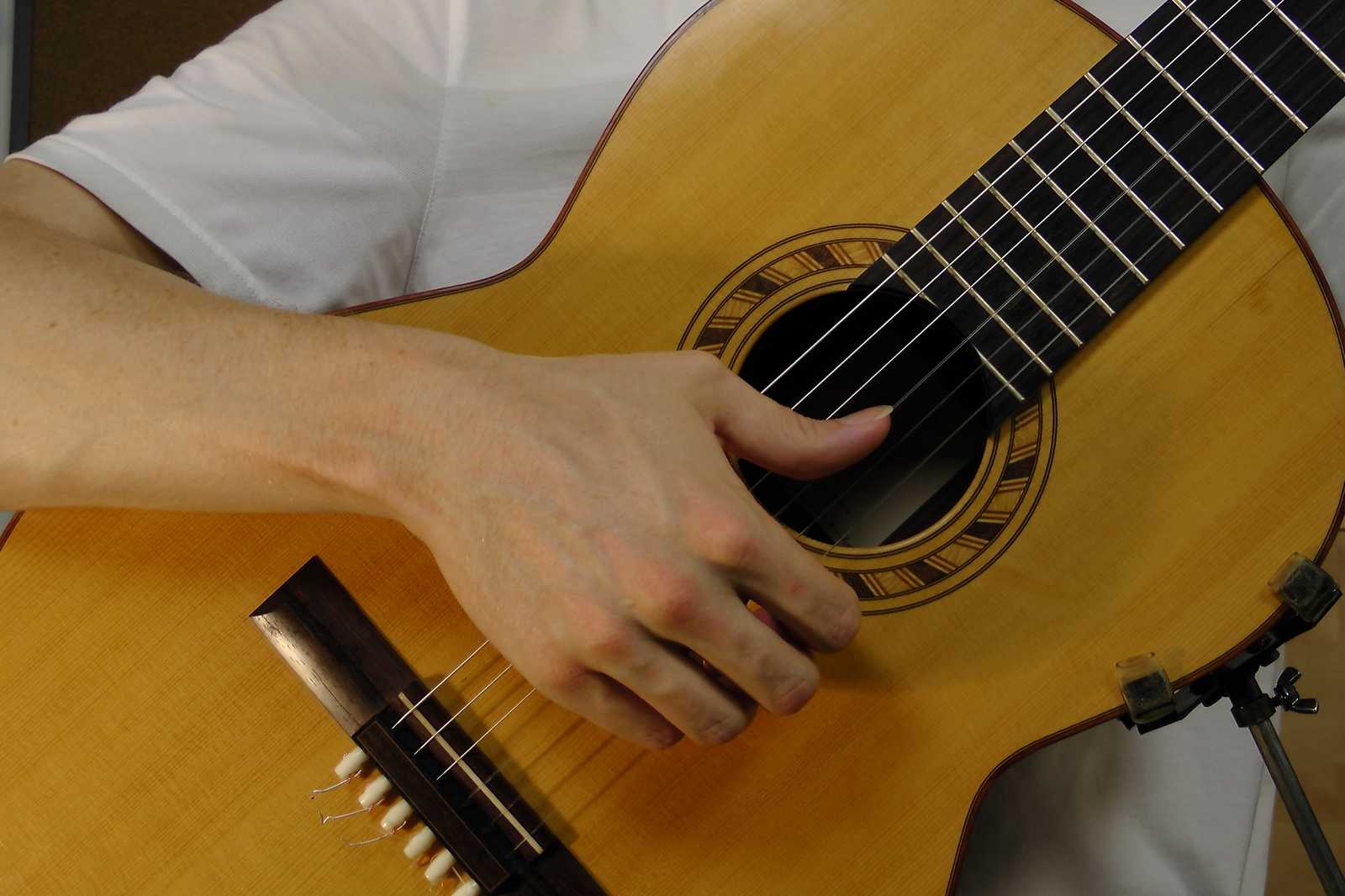What is the correct right hand position on the guitar?

Technique is an important part of playing any instrument. In order to have a good technique, you need to have a good position that allows good technique. That's what we'll go over today.
A good right hand position, on guitar, will enable a fluid technique. And that's my goal for you, to help you develop a solid guitar technique.
Before we begin, you should know that it's not going to be a good idea to copy what someone else's hand looks like. When you see the images below, your job is not to copy what my position looks like.
Why? The exact positioning of each player's hand will vary slightly because each player and each guitar are slightly different in size.
However, the important thing to note is that the principles of a good right hand position will always be the same. So to evaluate your right hand technique, you should looke for certain principles, rather than a certain shape.
What are these principles or rules? A good right hand position on guitar will follow the four rules of efficient musculoskeletal function, just as a good technique on any instrument will, too. I highly recomend you read that article first, them come back here.
It will help you apply those principles to the guitar and your right hand position.
The principles of a good right hand position
In general, this is what you'll be looking for in a good right hand position.
Posture
In order to have a stable right hand position, you'll need to also be seated (or standing) with good posture.
Wrist
The wrist is straight and aligned. It is not bending side to side (deviation) and it is not bending up or down (arch).
The wrist should have minimal deviation and arch, none if possible. It should have no more than 10 degrees of arch, 20 degrees at the absolute maximum if it is necessary in order to reach the strings. In other words, the wrist should be relatively straight.
Fingers
The fingers are naturally curved. That means each finger can move and relax in the middle of it's range of motion. A good way to get here is to make a fist, and then relax the thumb and fingers. Or try the opposite: open your hand as wide as it will go and then let everything relax.
Fingertips
Generally, the fingertips will be on top of, not underneath, the strings. Imagine the guitar's top is the ground. Imagine now that a tree grows straight up from a string. Your base knuckle should be at the top of the tree, and your fingertip should be at the root of the tree.
It may not seem important, but this position allows your fingers to get the best sounding free strokes. Your fingers will be able to follow through and move freely in a uniform direction without getting caught or hitting another string.
The large base knuckles of the fingers are positioned directly above the point where the fingertips contact the strings. This is an absolute requirement! If that is not properly placed, then the fingers will not be able to function properly. This position also guarantees that, when you execute a proper finger stroke, you will only strike the string that you intend and will avoid striking more than one string at a time.
Thumb
The thumb is also placed in a position where it can operate and relax in it's midrange. But in order for it to avoid clashing with finger movements, it should be to the outside of the fingers. The way to get the thumb in front of the fingers is to tilt the forearm and hand so that the thumb slides along the string to the outside of the fingers.
Back of the hand
The back of the hand should be roughly parallel to the strings. Again, don't copy this. You'll want to move the hand so that the knuckles are over the fingertips, and then rotate so that the thumb is outside of the fingers path of motion. That usually ends up with the hand being roughly parallel to the strings, but the important part is not the hand, but the position of the thumb and fingers.
Images of poor positioning on the guitar


Images of good right hand positioning on the guitar


Conclusion
When thinking about the right hand position, think less about what it "looks" like. Think more about how your fingers and thumb can function in that position.
If you are astute, you'll notice that the same rules that apply the right hand also apply to the left hand position on the guitar.
That's because your body works the way it works. We want to ensure you are always operating in the most effective way - which means following the 4 rules of movement.
Related


